CAIRO – 30 May 2022: The Egyptian archaeological mission working in the cemetery of the sacred animals (Bubastian) in the Saqqara archaeological area found the first and largest cache on the site dating back to the Late Period, during the work of the fourth excavation season of the mission.
Secretary General of the Supreme Council of Antiquities and head of the mission Mostafa Waziri explained that the discovered cache includes 150 bronze statues of various sizes of a number of ancient Egyptian deities, including Anubis, Amunmeen, Osiris, Bastet, Nefertum and Hathor, in addition to a set of bronze vessels that were used in the rituals of the goddess Isis, such as the Sistrum, and a headless, but very beautiful, bronze statue of the engineer Imhotep.
Waziri added that the mission was also able to discover a group of burial wells, in which a group of 250 colored wooden coffins from the Late Period (about 500 BC) were found closed with mummies in good condition. A set of amulets and wooden statues, some with gilded faces, and colored wooden boxes were additionally found.
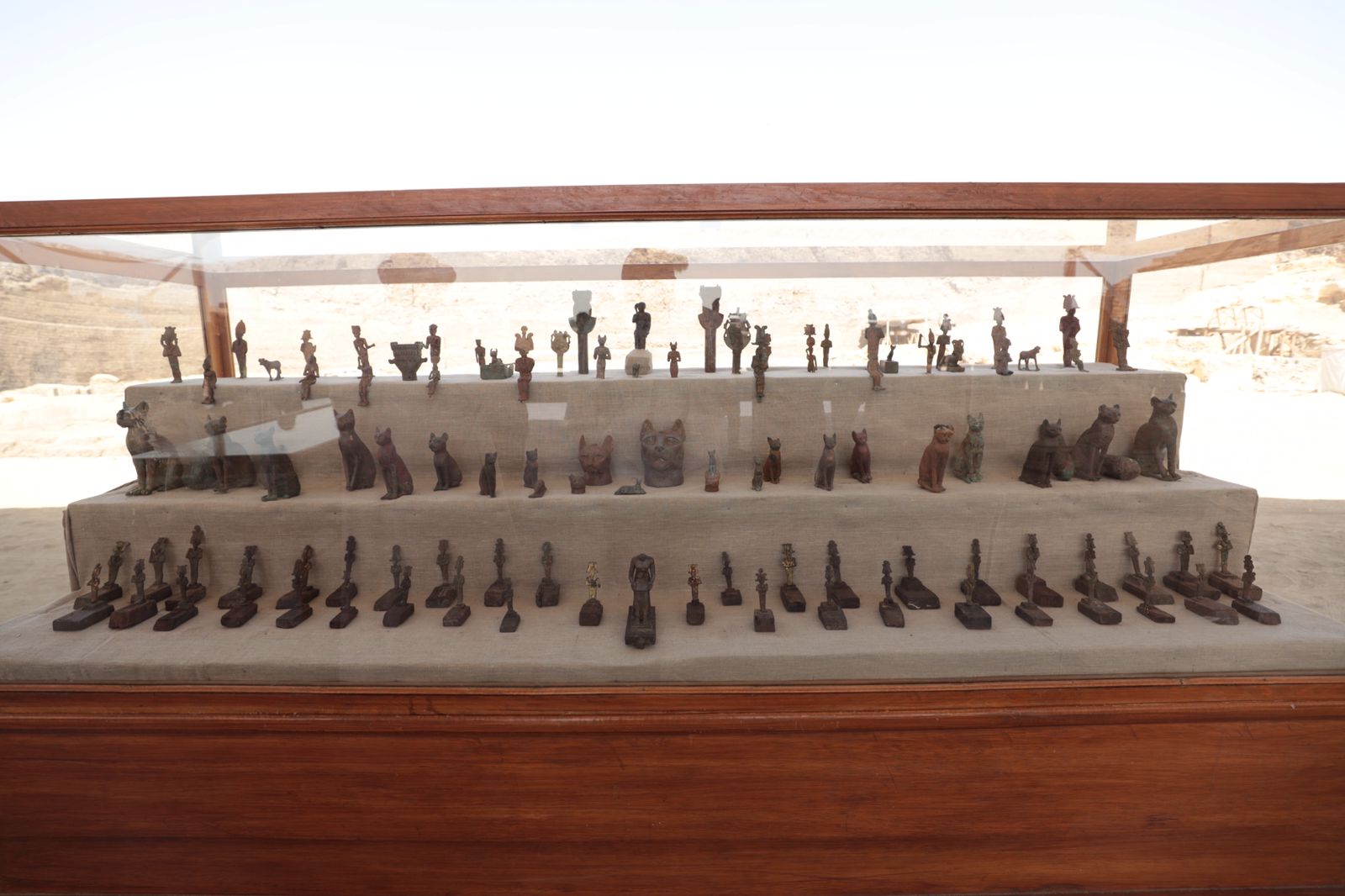
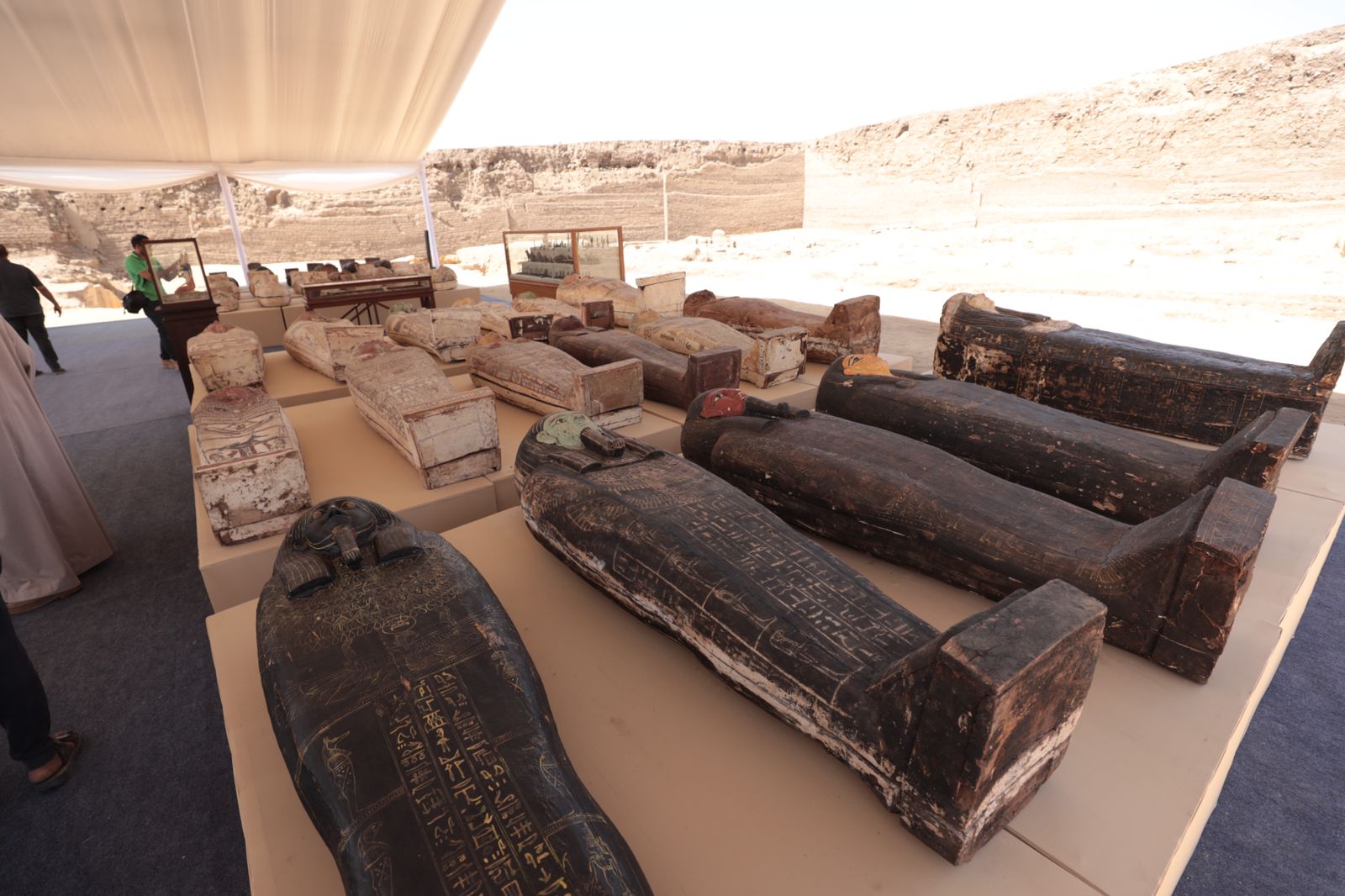
Waziri indicated that the excavations inside one of the discovered burial wells resulted in the discovery of a sarcophagus with a papyrus in a good state of preservation, which may contain chapters from the Book of the Dead. It was transferred to the restoration laboratories of the Egyptian Museum in Tahrir, for sterilization and humidification. Further studies will be conducted on the papyrus to determine the texts it contains.
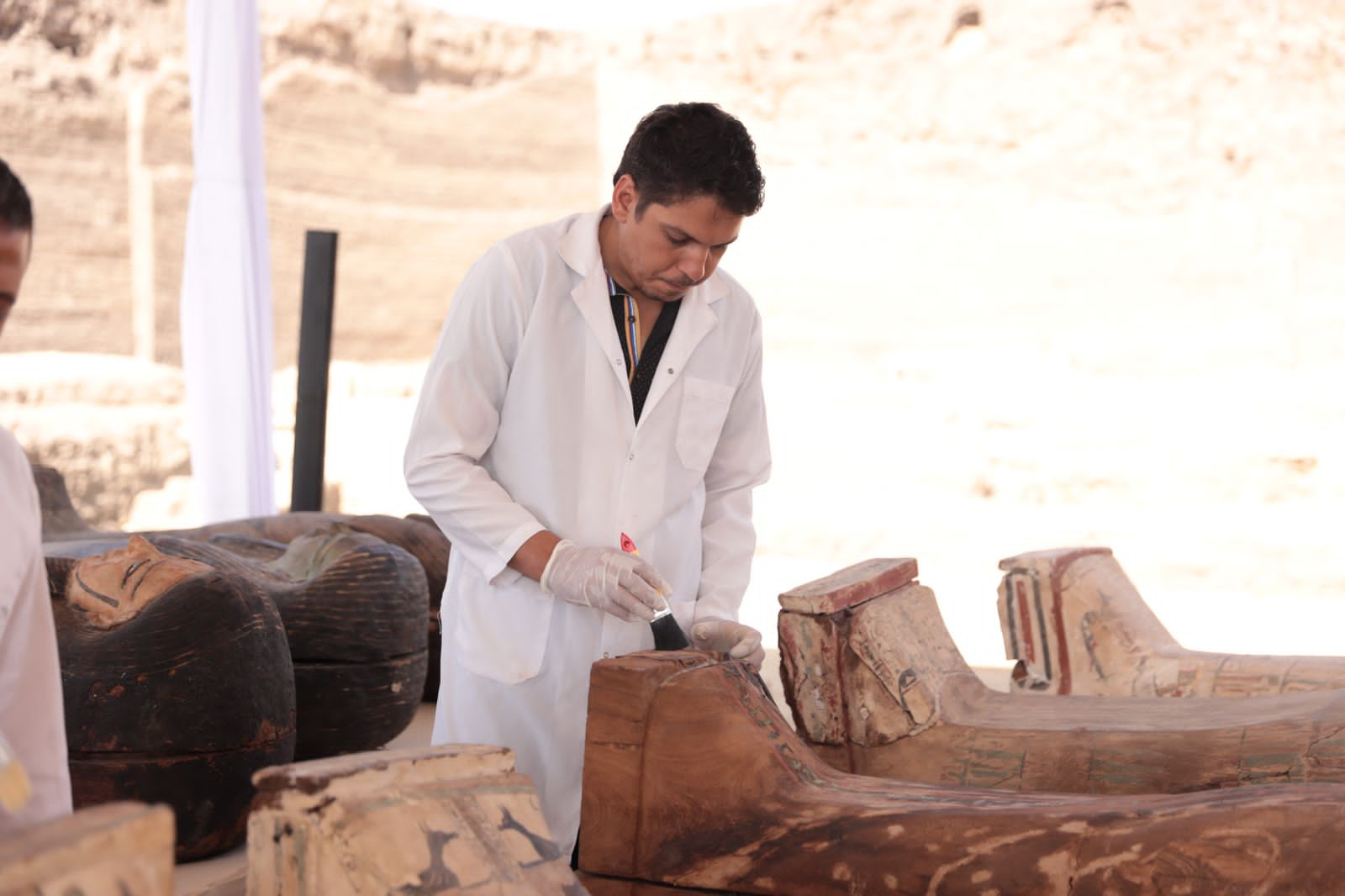
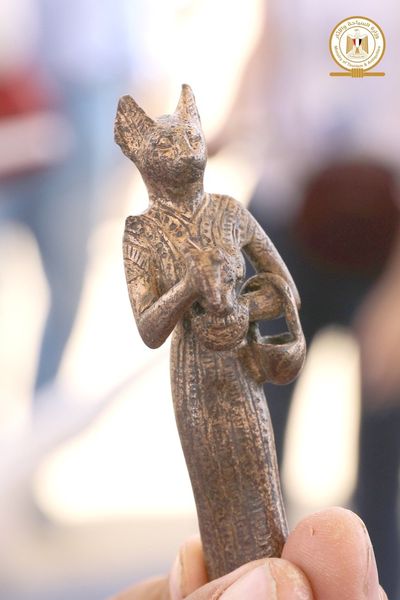
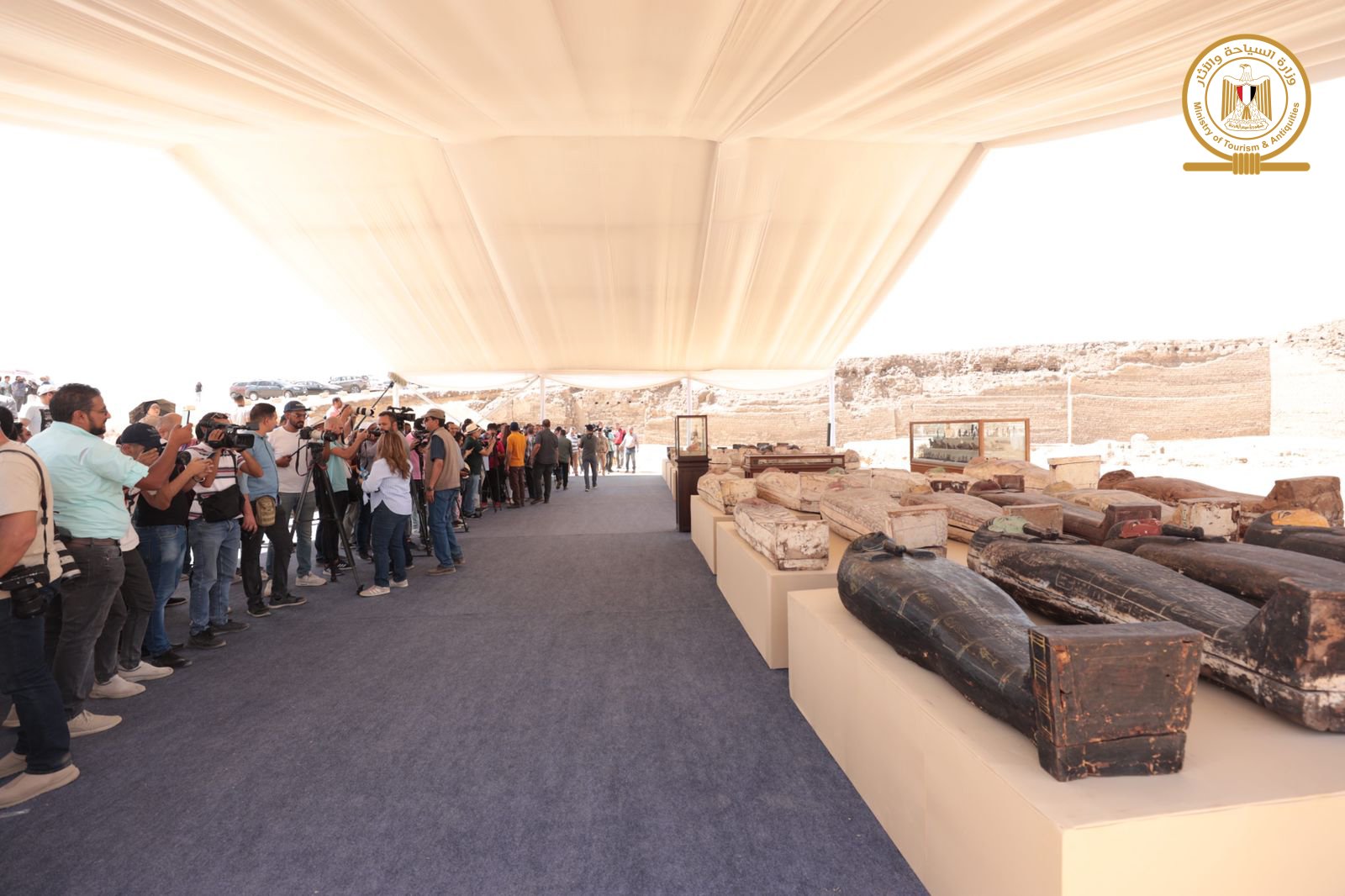
During the announcement of the discovery - Min. of Tourism & Antiquities
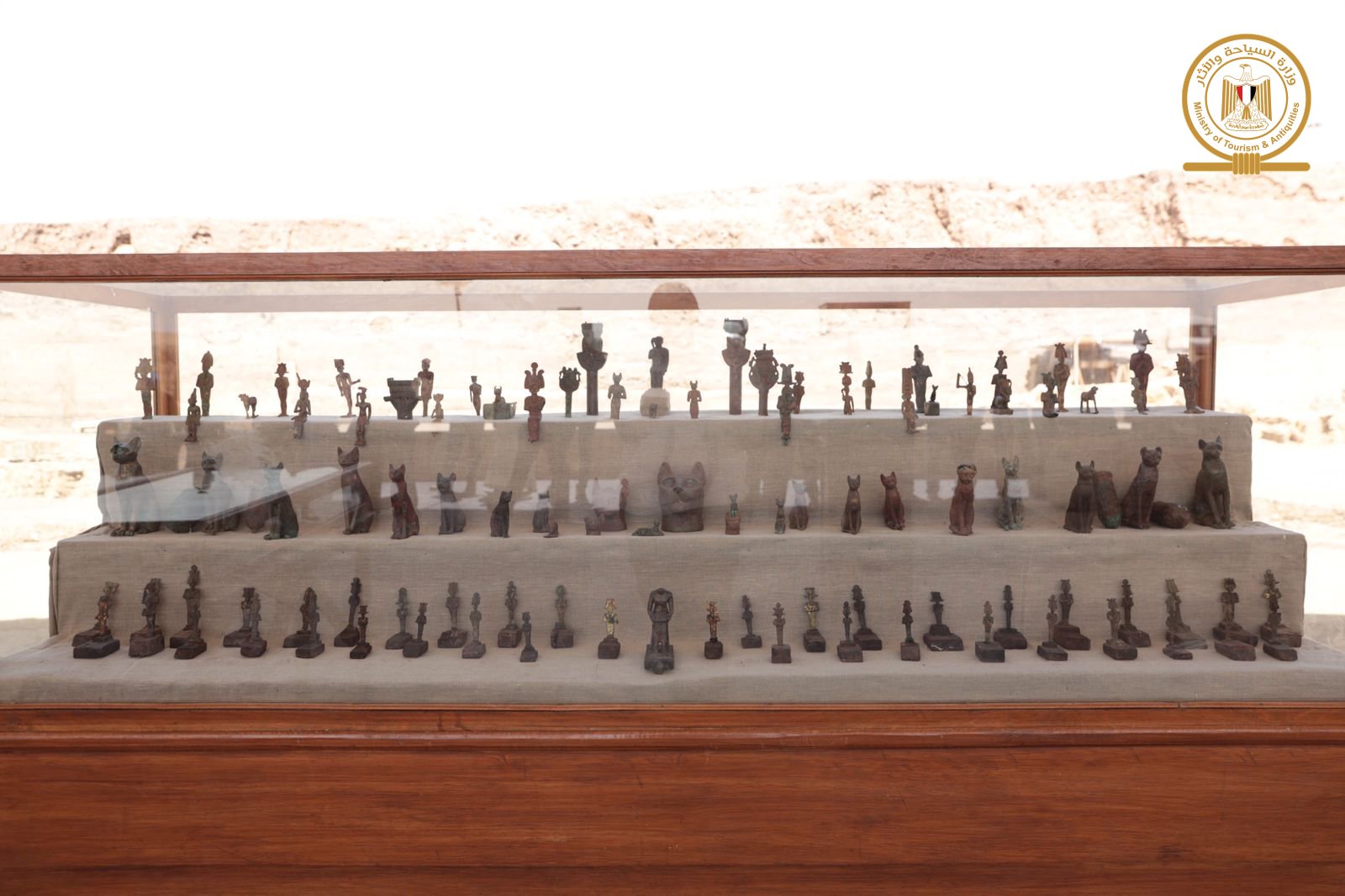
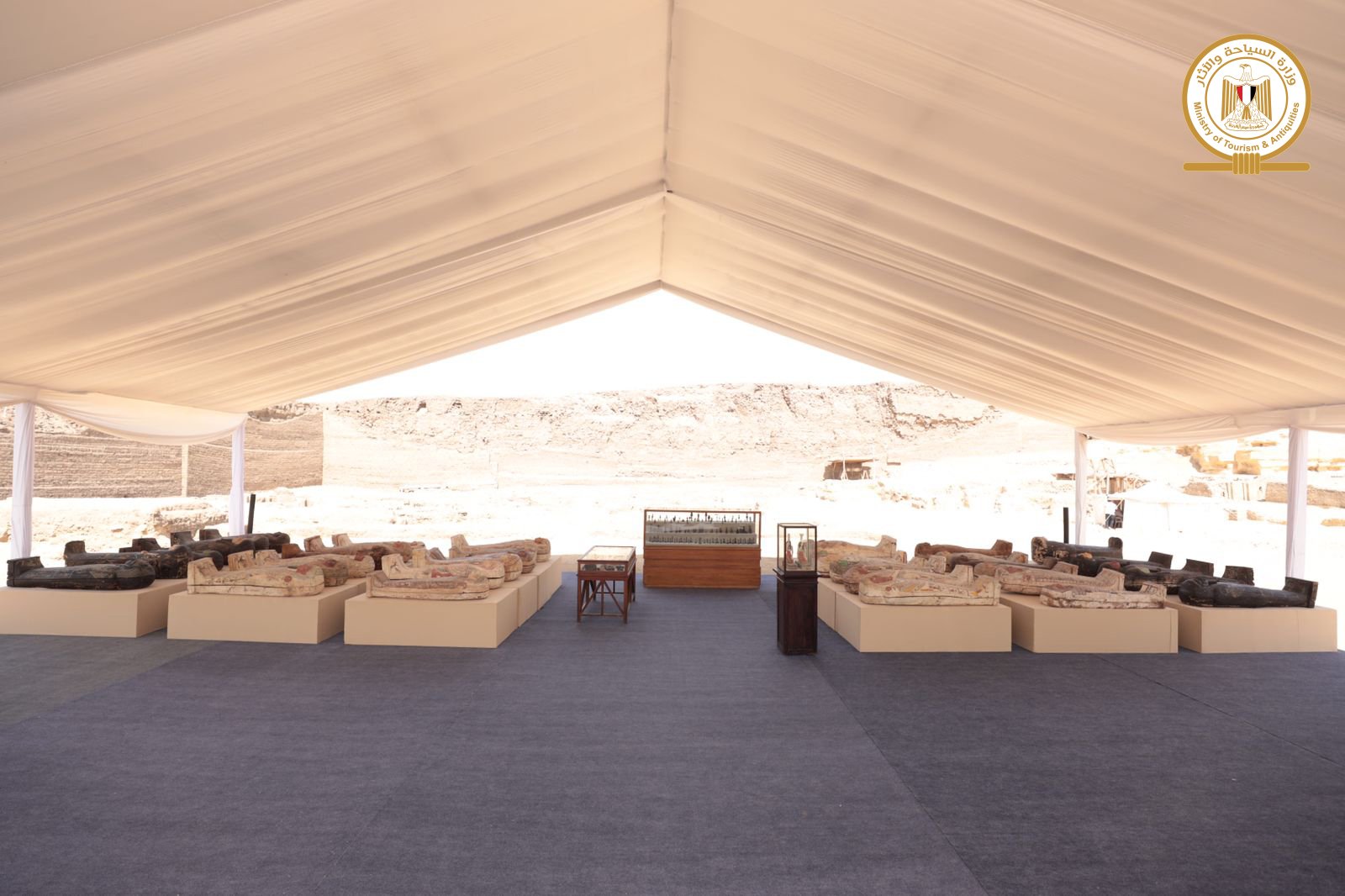
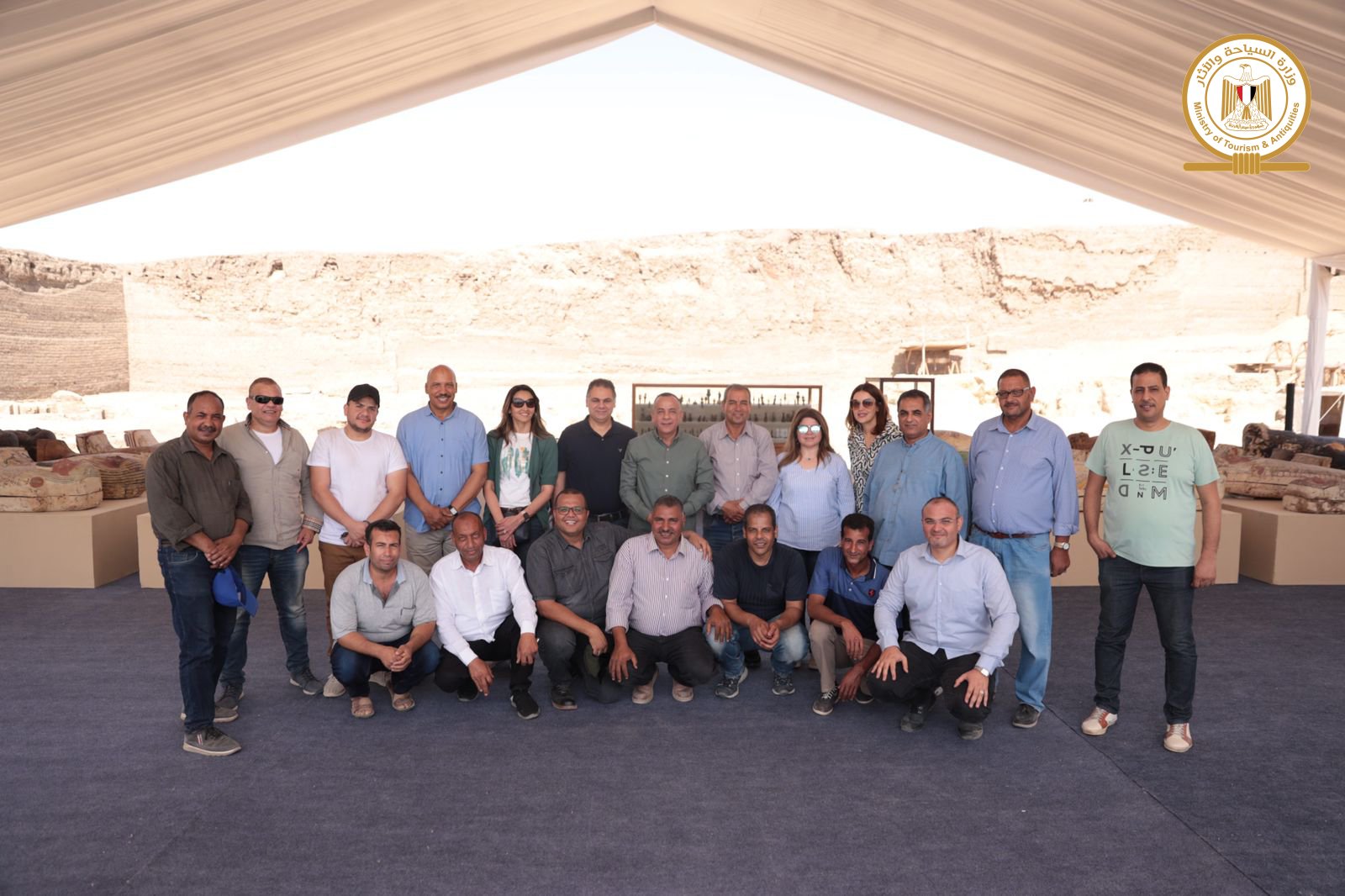
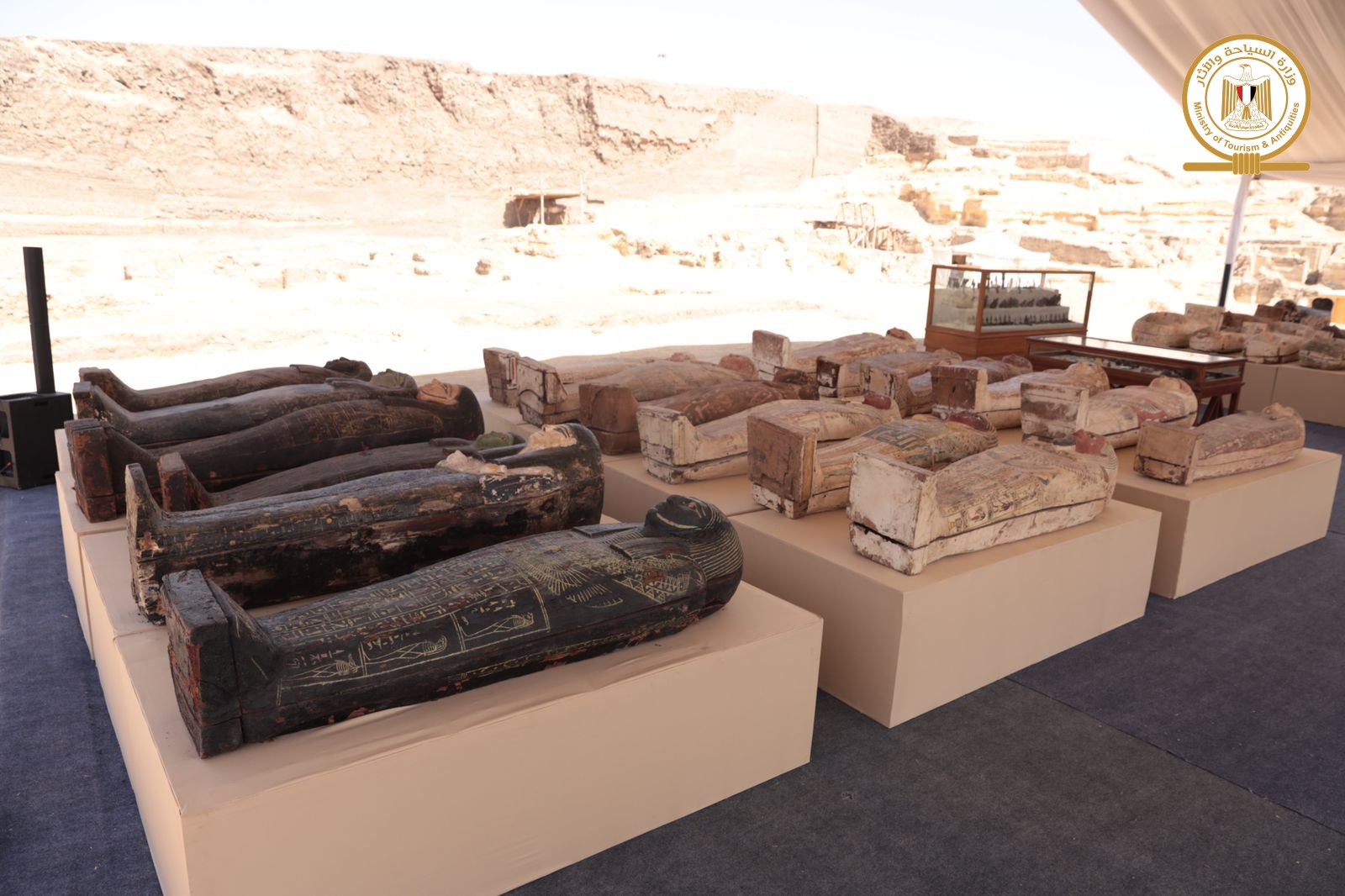
Moreover, the archaeological mission found two painted wooden statues with gilded faces of the two goddesses Isis and Nephthys in the position of mourners; both were in good condition. A burial from the New Kingdom (around 1500 BC) was uncovered and many adornment tools such as a bronze mirror and a set of bracelets, necklaces, earrings and anklets with their styluses and copper tools for daily life were found in it.
It should be noted that the Egyptian archaeological mission began its work on the site in 2018, when it succeeded in discovering the unique tomb of the priest of the Fifth Dynasty “Wahty”, in addition to seven rock tombs, three of which from the New Kingdom and four from the Old Kingdom, in addition to the facade of a tomb from the Old Kingdom. The mission also succeeded in discovering more than a thousand amulet of faience, dozens of wooden cat figurines, cat mummies, wooden figurines and animal mummies.
In 2020, the mission succeeded in uncovering more than 100 closed wooden coffins in their original state from the Late Period inside burial wells, and 40 statues of the god of the necropolis of Saqqara Ptah Sokar with gilded parts, and 20 wooden chests of the god Horus.
This discovery has been classified as one of the ten most important archaeological discoveries in 2020, according to the American Archeology magazine.
Comments
Leave a Comment